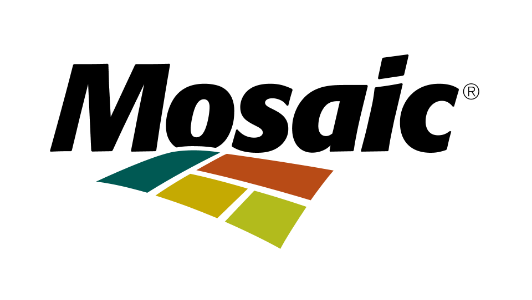
What Is Driving Fertilizer Prices?
Current market conditions are a perfect storm of complex issues. Andy Jung, VP of Market and Strategic Analysis, answers some pressing questions to help break down what is causing these issues and when the market might begin to moderate.
Q: What is driving fertilizer prices?
A: The recent increases in prices are due to many factors such as increases in commodity prices driving global demand of fertilizers, supply disruptions, and other countries that have restricted fertilizer exports to ensure supply in their own countries. To make matters more complex, each essential nutrient has its own set of reasons why the prices are elevated:
Potash – supplies were limited due to unforeseen production disruptions at several mines and higher demand has caused a rise in prices globally. The geopolitical situation in eastern Europe could further complicate supply disruptions in 2022, leading to prices being elevated throughout the year. To help offset these challenges, Mosaic has already announced plans to bring more supply to the market in 2022.
Nitrogen – supply disruptions from weather events in 2020 and rising gas prices caused many facilities to shut down production, which has led to substantial increases in nitrogen prices globally. The expectation is these one-off disruptions are not permanent, once gas prices revert to more normal levels, production should increase and exert downward pressure on nitrogen prices in 2022.
Phosphates – higher input costs such as ammonia and sulfur, two critical inputs for production of phosphates, have seen prices increase 313% and 194%, respectively, year-over-year - compared to 2020. Further, the entire supply chain has been deeply impacted by the drastic increase in transportation costs. The market has also seen countries pursue nationalistic actions to keep fertilizer supplies at home. For example, China, enacted export restrictions late last year, restrictions that could remain in place through June 2022. China accounts for between one-quarter and one-third of global phosphate exports annually. China’s decision to stop significant exports have impacted supply and demand globally, changing trade flows for every country importing and exporting this critical resource. In addition, one-offs or atypical weather events disrupted production at several facilities around the world, limiting supplies in the short term.
Overall, demand for fertilizer has increased as farmers try to capture additional revenue from high crop prices, leading to an increase in both planted acres and fertilizer use. The outlook for agricultural commodity prices remains strong for 2022, as it was in 2021, and with higher grain prices driving higher fertilizer demand, higher fertilizer costs historically follow. While this alone would increase prices, combined with the above mentioned global supply limitations – the combination has pushed prices to levels not seen in over a decade for phosphates and potash, and unprecedented levels for some nitrogen products.
Q: The phosphate industry in the U.S. petitioned for countervailing duties (CVD) against Morocco and Russia prior to the recent surge in prices, wasn’t that the reason for the recent increases in fertilizer?
A: The short answer is no.
The CVD has not limited overall phosphate imports into the U.S. In fact, U.S. phosphate imports increased to a record level in 2021 after increasing by 1.7 million metric tons or 73% relative to 2020 – even with duties imposed on Russian and Moroccan imports. In 2021, 14 countries supplied finished phosphate product to the U.S., about double the number of suppliers in recent years. The U.S. phosphate market is now a more balanced and fair-trade market, which creates a more competitive environment with trusted and reliable suppliers for American farmers and American agriculture in the long term. While U.S. farmers are indeed seeing the costs of inputs rise, they are not alone. Phosphate prices in other key agricultural markets, like Brazil and India, are higher than in the U.S. — which clearly indicates the CVD is not driving higher prices.
To further explain, the tariffs on phosphate imports from Morocco and Russia are settled duties that were determined by an affirmative ruling by both the U.S. International Trade Commission (ITC) and the U.S. Department of Commerce (Commerce). The CVD was determined after a lengthy and thorough investigation by the ITC and Commerce which determined that Russian and Moroccan phosphate producers were unfairly subsidized by their governments, and that these subsidized imports caused significant harm to the U.S. phosphate industry. While we understand the timing is confusing, the ITC and Commerce departments’ investigation encompassed years of data.
In short, the current market has been driven by a confluence of increased demand, supply chain disruptions, elevated input costs, and pandemic related issues, and not merely by a ruling for fair trade.
Q: What is the current make up of phosphate market share by U.S. producers?
A: The U.S. domestic phosphate market can change dramatically year to year. Currently, four domestic producers supply the majority of the market – typically about 70%, with Mosaic the largest producer in North America. Imports typically make up about 30% of supply, although they increased in 2021. Due to the seasonality of demand in North America, Mosaic typically exports about half of its finished phosphate product in any given year. However, as a result of global events this year and Mosaic’s commitment to U.S. farmers to alleviate the current market dynamics, we adjusted our typical trade volumes and purposefully diverted fertilizer tons away from the international market to boost availability domestically when U.S. farmers need it most.
Q: Will high fertilizer prices continue in 2022 and 2023?
A: For nitrogen, there is a clear path forward to prices trending downward in 2022 as shuttered facilities come back online to add supply to the global market. There is also new capacity slated for commissioning in 2022. Since nitrogen is a major component of phosphate fertilizers, we should see the lower pricing of nitrogen pass through to phosphate prices. In addition, if China resumes more normalized phosphate exports later in 2022, as expected, we could see those increased volumes contributing to a gradual easing of prices as well; however, phosphate supply is tight with depleted inventories worldwide and any new investments in increasing production takes considerable time. We won’t see that production come online for several years. For potash, all eyes are on eastern Europe and Belarus, where the world’s second-largest potash supplier in Belarus could lose access to their critical export port in Lithuania, which could sharply curb their ability to supply markets around the world. Belarus supplies roughly 16% of all potash globally. As such, potash markets could remain tighter for longer and the current elevated pricing paradigm could persist.
Andy Jung has a master’s in applied economics from Marquette University and more than 20 years of experience in global market analysis. Data explained by Jung in this Q&A are provided by third-party or government entities, market reports, industry and trade associations such as the International Fertilizer Association (IFA) and The Fertilizer Institute (TFI). Combined with extensive expertise and experience, this data help to inform Mosaic’s own market analysis and future outlook.
